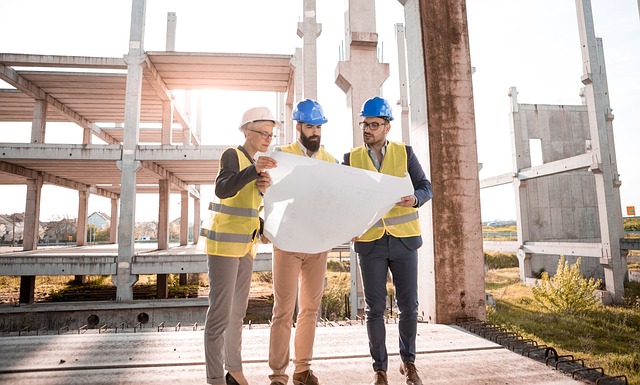Expert Underpinning Construction Services in Toronto

Introduction to Underpinning Construction
Underpinning construction is a critical process for strengthening and stabilizing the foundations of existing buildings. In Toronto, underpinning construction involves extending the foundation depth or distributing the load across a greater area to ensure the structure can bear additional weight or remain secure in unstable soil conditions. In Toronto, where diverse soil types and older buildings are common, underpinning is essential to maintaining structural integrity and safety.
Why Underpinning is Essential in Toronto
Toronto’s unique geological conditions and the city’s architectural diversity make underpinning a necessary solution for many properties. The city experiences a range of soil types, from clay to sandy soils, which can affect foundation stability. Additionally, older buildings may suffer from foundation settling, cracks, or water damage. Underpinning addresses these issues, providing a solid foundation and preventing further damage, ensuring the longevity and safety of structures.
Types of Underpinning Methods
Several underpinning methods are used in construction, each suited to specific conditions:
Mass Concrete Underpinning (Pit Method):
The traditional method involves excavating sections below the existing foundation and pouring concrete to extend the foundation depth.
Beam and Base Method:
This method involves constructing a reinforced concrete beam below or alongside the existing foundation to redistribute the load.
Mini-Piled Underpinning:
This method suits areas with variable soil conditions or restricted access. It uses small-diameter piles driven deep into stable soil layers.
Screw Pile Underpinning:
Uses steel screw piles that are rotated into the ground, ideal for areas with limited access or requiring minimal vibration.
Signs Your Building Needs Underpinning
Recognizing the signs that your building may need underpinning is crucial to prevent serious structural issues. Key indicators include:
- Cracks in walls, significantly wider at the top or bottom.
- Uneven or sloping floors.
- Windows and doors that cling or fail to shut correctly.
- Gaps around window frames or doors
- Visible foundation movement or settling
- Early discovery and action can avoid significant repair expenses while ensuring the safety of the building’s occupants.
The Underpinning Process: Step-by-Step
The underpinning process involves several key steps to ensure a successful outcome:
Assessment and Planning: Inspect the building and soil conditions thoroughly to determine the appropriate underpinning method.
Excavation: Careful excavation of sections beneath the foundation to the required depth.
Reinforcement: Installation of steel reinforcements if necessary, depending on the chosen method.
Concrete Pouring: Pouring concrete to create new or extended foundation sections.
Curing and Monitoring: Allowing the concrete to cure while monitoring for structural shifts or changes.
Final Inspection: A comprehensive inspection ensures the underpinning successfully stabilizes the foundation.
Choosing the Right Underpinning Contractor
Selecting a reliable and experienced underpinning contractor is crucial for the success of your project. Consider the following when making your choice:
Experience and Expertise: Look for subcontractors who have already provided help for similar projects.
Licensing and Insurance: Ensure the contractor is appropriately licensed and insured to perform underpinning work.
References and Reviews: Examine online reviews and references to determine the contractor’s reputation and level of customer satisfaction.
Detailed Proposals: Request detailed project proposals and quotes to compare services and costs.
Benefits of Professional Underpinning Services
Professional underpinning services offer numerous benefits, including:
Enhanced Structural Stability: Ensures your building remains safe and secure, preventing future foundation issues.
Increased Property Value: A well-maintained foundation enhances the value and marketability of your property.
Long-Term Savings: Addressing foundation problems can save you from more costly repairs.
Peace of Mind: Knowing your property is structurally sound provides property owners and occupants peace of mind.
Cost Considerations for Underpinning Projects
The cost of underpinning can vary widely based on several factors, including:
Extent of Foundation Damage: More extensive damage requires more intensive repair efforts.
Underpinning Method Used: Different methods have varying costs associated with materials and labour.
Property Size and Accessibility: Larger properties or those with limited access may incur higher costs.
Local Regulations and Permits: Compliance with local building codes and obtaining necessary permits can affect the overall cost.
To understand the full scope and cost of the project, it’s essential to obtain detailed quotes from multiple contractors.
Case Studies of Successful Underpinning Projects in Toronto
Examining case studies of successful underpinning projects provides valuable insights into the process and benefits. For example:
Residential Home in Downtown Toronto: Addressed severe foundation settling using mini-piled underpinning, resulting in a stable and secure foundation with minimal disruption to the homeowners.
Historic Building in Old Toronto: Utilized beam and base underpinning to preserve the architectural integrity while reinforcing the foundation, ensuring the building’s longevity.
These case studies highlight the effectiveness of various underpinning methods in different scenarios.
Frequently Asked Questions About Underpinning
How long does underpinning take?
Depending on the job’s complexity, a few weeks to several months can pass.
Is underpinning covered by insurance?
It depends on your insurance policy and the cause of the foundation issues; check with your provider for details.
Can underpinning be done in all weather conditions?
While underpinning can be done year-round, extreme weather conditions may cause delays.
Future Trends in Underpinning Technology
The underpinning industry continues to evolve with advancements in technology and materials. Future trends may include:
Innovative Materials: Development of more robust, more durable materials that improve the efficiency and effectiveness of underpinning.
Green Solutions: Eco-friendly underpinning methods that minimize environmental impact.
Automation and Robotics: Robotics and automated equipment reduce labour costs and increase accuracy.
Keeping up with these developments can help contractors and property owners make better-informed decisions about their foundation projects.
--------------------------------
Guestposted.com Notice!
Audience discretion is needed, Read TOS.
Submit Guest Post / Read Latest / Category List
App & Rate-Us / Subscribe Daily Newsletter (FREE)



